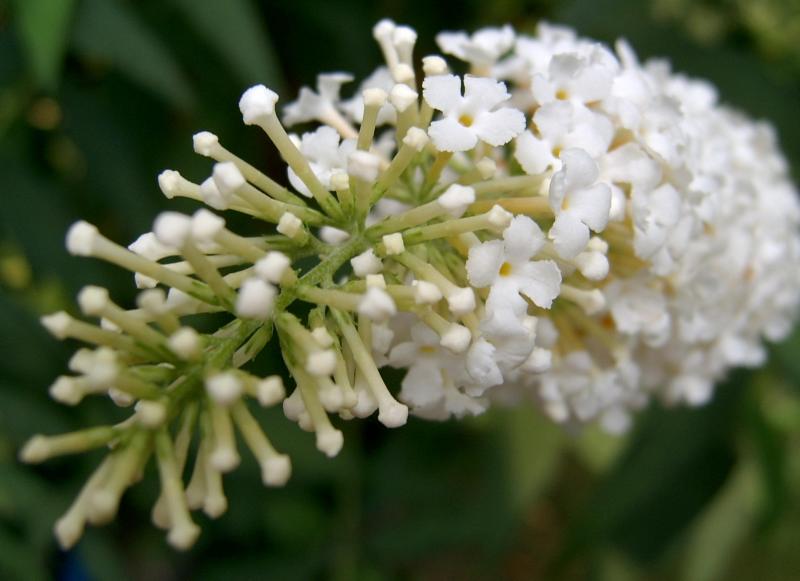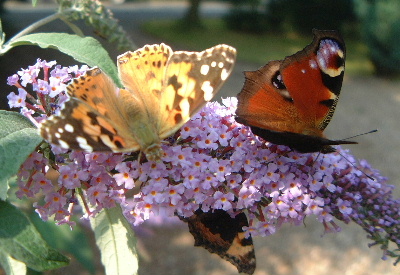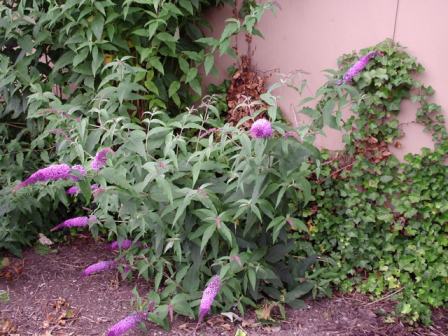BuddlejaBuddleja, also often spelled Buddleia, is a genus of flowering plants. It is now included in the Scrophulariaceae, though in the past was previously classified in either the Loganiaceae or in a family of its own, the Buddlejaceae. The plant was named after the Reverend Adam Buddle who was a botanist and a rector in Essex, England. The roughly 100 species are mostly shrubs, a few being trees; the largest species reach 30 m tall, but most species rarely exceed 5 m tall. Both evergreen and deciduous species occur. They are native throughout the warmer parts of the New World from the southern United States south to Chile, and widely in the Old World in Africa and the warmer parts of Asia, but absent as natives from Europe and Australasia. The species are divided into two groups based on their floral type, those in the New World being dioecious, and those in the Old World being monoecious. The leaves are lanceolate in most species, and arranged in opposite pairs on the stems (alternate in one species, B. alternifolia); they range from 1-30 cm long. The flowers are produced in dense panicles 10-50 cm long; each individual flower is tubular, about 1 cm long, with the corolla divided into four spreading lobes (petals), about 3-4 mm across. Flower colour varies widely, with white, pink, red, purple, orange or yellow flowers produced by different species and cultivars; they are rich in nectar and often strongly scented. The fruit is a small capsule about 1 cm long and 1-2 mm diameter, containing numerous small seeds; in a few species (previously classified in the separate genus Nicodemia) the capsule is soft and fleshy, forming a berry. Several species are popular garden plants, The species are commonly known as Butterfly Bush due to their attractiveness to butterflies; they are also attractive to bees and ladybirds. The species of buddleia with red flowers are also attractive to hummingbirds. The most popular cultivated species is Buddleja davidii from central China, named after the French naturalist Père Armand David. Other common garden species include Buddleja globosa from southern Chile, grown for its strongly honey-scented orange globular flower-heads, and Buddleja alternifolia with lilac coloured flowers. Several interspecific hybrids can also be found, including B. x weyeriana (B. globosa x B. davidii). Some species are commonly found as escapees from the garden. B. davidii in particular is a great coloniser of dry open ground; in towns in Britain, it often self-sows on waste ground, where it grows into a dense thicket, and it is listed as an invasive species in many areas. It is frequently seen beside railway lines, on derelict factory sites and after the Second World War on urban bomb sites. References Leeuwenberg, A. J. M. (1979) The Loganiaceae of Africa XVIII Buddleja L. II, Revision of the African & Asiatic species. H. Veenman & Zonen B. V., Wageningen, Netherlands.
From Wikipedia, the free encyclopedia
|
|


